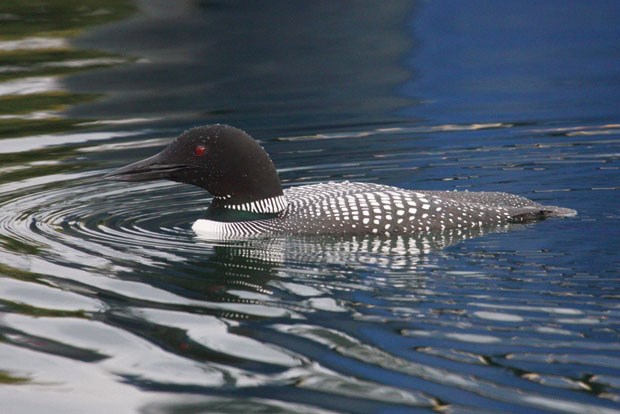The common loon is well-known to every Canadian as the bird on our one dollar coin. Its haunting calls evoke summer holidays, the beauty of a mountain lake and quiet northern wilderness.
Despite its widespread distribution across the continent, from Alaska to Newfoundland, there is still much to be discovered about this iconic species.
It has been known for some time that loon pairs faithfully return each spring to the same traditional lake they used in previous years, building a nest on an island secure from predators. Loons make attentive parents, and the downy chicks often ride on a parent's back while they learn to fend for themselves.
At the end of summer, loons depart their lake and fly to salt water, often thousands of kilometres away, wintering along continental coasts. Now biologists from the Biodiversity Research Institute, Maine, have used the latest tracking technology to show that common loons are as faithful to wintering sites as to their breeding lakes. They found that 85 per cent of the adult loons in the study wintered in the same 10 to 20 square kilometre of ocean every year. Some loons returned to the same site for six consecutive years.
The common loon's close connection to such specific winter habitat highlights Delta's importance for these special Canadian birds. Many loons spend the winter on Boundary Bay and Roberts Bank. Adult loons molt out of their glossy, intricatelymarked breeding plumage and become plain dark grey and white.
Later in the winter they undergo a complete wing feather molt, becoming flightless for several weeks. During this time they dive to escape danger, but cannot fly. This has important implications for conservation of the species, as any type of contamination of their winter habitat, such as an oil spill, is likely to be fatal.
As days grow shorter and the rains begin, coastal waters fill with birds of many species. Tens of thousands of ducks gather in huge offshore flocks. Geese, gulls, cormorants and wintering shorebirds become abundant.
Common loons can be spotted readily among the mass of birds by their size and shape: they are much larger than ducks and generally swim singly or in small groups. They dive effortlessly and can spend minutes underwater. Their big heads and powerful bills are recognizable even at a distance.
Very occasionally, perhaps on a still evening, one can be heard to give its beautiful bubbling call.
Anne Murray's books on Delta's natural and ecological history, A Nature Guide to Boundary Bay and Tracing Our Past, a Heritage Guide to Boundary Bay, are available in local stores or from www.natureguidesbc.com. She blogs at www.natureguidesbc.wordpress.com.



